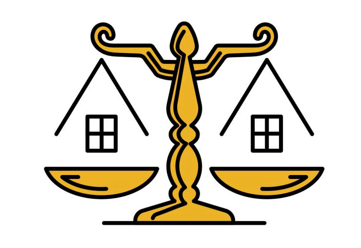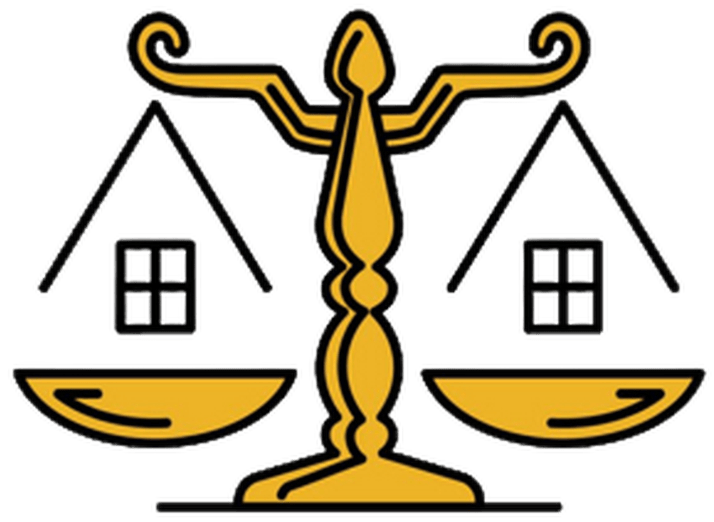Mastering Boardroom Disputes and Governance Challenges: Resolving Conflicts with Confidence
Introduction
Boardroom Disputes And Governance Challenge;
Governance issues and boardroom disputes are some of the most complex and potentially damaging aspects of running a successful business. Whether you’re dealing with family businesses, partnerships, large corporations, or nonprofit organizations, disputes at the highest levels of management can threaten the overall stability of the organization. Boardroom disputes can range from disagreements on strategic direction, conflicts of interest, and issues with governance practices. Effective governance, however, aims to mitigate these issues by ensuring clear roles, accountability, transparency, and dispute resolution mechanisms.
In the intricate world of corporate management, one of the most delicate yet unavoidable phenomena is the emergence of boardroom disputes and governance challenges. At the heart of every successful company lies its leadership—its board of directors—entrusted with navigating strategic decisions and upholding fiduciary responsibilities. Yet, when divergent interests, personality clashes, or unresolved corporate tensions arise within the boardroom, what was once a pillar of strategic advantage quickly becomes a hotspot for damaging conflict. Boardroom disputes and governance challenges not only threaten the fabric of internal operations but can also significantly impact stakeholder confidence, brand reputation, and long-term sustainability.
Navigating governance-related conflict is no longer a task reserved for crisis moments. With increasing regulatory oversight, stakeholder activism, and the evolving complexities of global markets, boards today must adopt a proactive, rather than reactive, approach. It is essential for corporate leaders, legal advisors, and governance professionals to deeply understand both the nature and consequences of internal discord. From disagreements over executive compensation to deadlocks on strategic direction or breach of fiduciary duties, the potential for dispute lurks beneath the surface of many corporate dynamics.
Corporate boardroom disputes often stem from three major triggers: conflicting interests among directors or shareholders, lack of clarity in governance structures, and weak conflict resolution frameworks. While companies are generally expected to maintain internal policies and charters that define director conduct and decision-making hierarchies, these documents often fall short when applied to real-world power struggles. Disputes may escalate quickly if no robust governance mechanism or neutral conflict resolution avenue is in place. Additionally, in jurisdictions like Nigeria, where corporate governance is still evolving amid regulatory enforcement challenges, the absence of clearly delineated dispute protocols often leaves companies vulnerable to long-drawn litigation or administrative sanctions.
The legal dimensions of boardroom disputes are multifaceted. Directors owe both fiduciary and statutory duties to the company. Any perceived or actual breach can spark significant unrest. Allegations of self-dealing, misuse of company resources, failure to disclose conflicts of interest, or inconsistent board decisions can trigger not only internal investigations but also regulatory scrutiny. These disputes, if not promptly and professionally resolved, could culminate in court actions or corporate takeovers. The Companies and Allied Matters Act (CAMA) 2020 has introduced reforms aimed at fostering better governance and accountability, yet implementation and interpretation often vary, leading to uncertainty in conflict resolution paths.
Besides legal triggers, human dynamics are equally instrumental in fueling governance disputes. Power tussles, ego-driven decision-making, and lack of communication or transparency among board members create fertile ground for dysfunction. In some cases, shareholders may also clash with the board over strategic priorities or question the competence and integrity of directors. Family-owned businesses and joint ventures are especially prone to such disputes, where emotional investments often override rational governance.
Moreover, the influence of external stakeholders, such as investors, regulators, and the media, cannot be ignored. A well-publicized governance conflict can diminish investor confidence, drop share prices, and result in hostile takeovers or reputational damage. The digital age has further amplified the consequences of boardroom crises—internal leaks, whistleblower complaints, and viral news cycles can escalate disputes from the boardroom to the public arena in a matter of hours.
However, these challenges are not insurmountable. Modern governance demands that companies embed conflict resolution mechanisms into the very fabric of their corporate structures. This includes regular board evaluations, director training, independent non-executive oversight, use of governance charters, and where necessary, recourse to third-party mediation or arbitration. Forward-thinking organizations now employ governance consultants and legal experts not only in times of crisis but also as preventative actors in boardroom dynamics.
The objective is not merely to suppress disputes but to resolve them with confidence—to transform potential conflicts into opportunities for institutional reform, leadership renewal, and enhanced transparency. When disputes are tackled with foresight, empathy, and legal precision, they become catalysts for organizational resilience and innovation. Ultimately, strong governance is not defined by the absence of disagreement, but by the board’s capacity to handle disputes constructively and lawfully.
This article explores, in depth, the legal, structural, and strategic frameworks necessary for mastering boardroom disputes and governance challenges. It offers insights into conflict origins, the roles of various stakeholders, the impact of unresolved disputes, and practical mechanisms for peaceful and lawful resolution. The aim is to empower boards and corporate entities to not just survive governance conflicts—but to emerge stronger and more aligned in their missions.
This article delves into various dimensions of handling boardroom disputes and governance issues, offering in-depth analysis, solutions, and preventative measures for managers, directors, and business owners alike.
1. Understanding Boardroom Disputes
Definition and Types of Disputes
A boardroom dispute refers to a disagreement among board members or between board members and executives that disrupts the decision-making processes. These disputes can arise for various reasons, ranging from differences in opinions on company strategy to personal conflicts or misaligned incentives.
The main types of boardroom disputes include:
Strategic disagreements: Differences over the company’s direction or operational strategies.
Conflicts of interest: Instances where personal or financial interests of board members conflict with the company’s goals.
Management disputes: Tensions between the board and executives over control and decision-making authority.
Personality clashes: Personal conflicts between directors or board members that interfere with collaboration.
Ethical and legal issues: Disagreements on issues such as corporate ethics, regulatory compliance, or legal liabilities.
Common Causes of Boardroom Conflicts
Several factors can lead to boardroom disputes, and understanding these triggers is essential in preventing and resolving them effectively. Here are some common causes:
Lack of clarity in roles: When the roles of board members are not well defined, conflicts over responsibilities and authority can arise.
Poor communication: Miscommunication or lack of communication between board members can lead to misunderstandings and tension.
Different interests or visions: Board members might have divergent views on the company’s future or how to address specific challenges, leading to strategic disagreements.
Conflicts of personality: Strong personalities within the board can lead to friction if not managed properly.
Lack of trust and transparency: Without a culture of transparency and trust, suspicions can arise, leading to disputes.
2. Governance Issues in Organizations
Governance Frameworks
Corporate governance refers to the system by which companies are directed and controlled. The governance framework defines the roles and responsibilities of the board, management, shareholders, and other stakeholders. It establishes the rules and practices that govern how decisions are made and ensures accountability, transparency, and ethical behavior.
A solid governance framework includes:
Board structure and composition: Ensuring the board has a diverse mix of skills, experience, and perspectives.
Clear roles and responsibilities: Defining the roles of the board, executives, and management to avoid overlap and confusion.
Code of conduct: Setting standards of behavior for board members to ensure integrity and ethical decision-making.
Risk management processes: Identifying potential risks and implementing controls to mitigate them.
Dispute resolution mechanisms: Ensuring there are clear procedures in place for addressing disputes that may arise among board members or between the board and management.
Key Challenges in Corporate Governance
Corporate governance is not without its challenges. Some of the most common issues include:
Board independence: Ensuring that the board acts independently of management can be difficult, especially in closely-held companies or family-owned businesses.
Conflicts of interest: These arise when board members have personal or financial interests that conflict with their duty to the company.
Transparency and accountability: Without proper checks and balances, decisions may be made without adequate scrutiny, leading to governance failures.
Succession planning: Poor planning for leadership transitions can create uncertainty and disputes within the board.
Stakeholder engagement: Balancing the interests of various stakeholders (e.g., shareholders, employees, customers) can be a source of tension and conflict.
3. The Impact of Boardroom Disputes on Organizations
Boardroom disputes can have far-reaching consequences for an organization. Here are some of the key impacts:
Financial Costs
Disputes can lead to significant financial costs, including:
Legal fees: If a dispute escalates to legal action, the costs can be substantial.
Loss of business opportunities: Prolonged disputes can cause delays in decision-making, resulting in missed business opportunities or a lack of strategic direction.
Decreased investor confidence: Investors may lose confidence in the company’s leadership, leading to a decline in stock prices or difficulty raising capital.
Damage to Reputation
Boardroom disputes often become public, especially in publicly traded companies. This can damage the company’s reputation, as stakeholders perceive the organization to be unstable or poorly managed.
Loss of Key Personnel
Prolonged disputes can lead to the resignation or removal of key executives or board members. This can create a leadership vacuum and further destabilize the company.
4. Preventing Boardroom Disputes
Effective Communication
Open and transparent communication is key to preventing disputes. This includes:
Regular meetings: Ensuring that board members meet regularly to discuss key issues and make decisions.
Clear communication channels: Establishing clear lines of communication between the board and management to avoid misunderstandings.
Inclusive decision-making: Ensuring that all board members have the opportunity to contribute to discussions and decisions.
Board Diversity and Inclusivity
A diverse board can bring different perspectives and ideas, which can help prevent groupthink and reduce the likelihood of disputes. It’s important to:
Recruit a diverse range of board members: Ensure that the board includes individuals with different backgrounds, experiences, and skills.
Foster an inclusive culture: Encourage open debate and discussion, and ensure that all voices are heard.
Transparent Decision-Making Processes
Transparency is crucial to preventing disputes. This can be achieved by:
Establishing clear procedures for decision-making: Ensure that there are clear guidelines for how decisions are made and that all board members are aware of these procedures.
Documenting decisions: Keep detailed records of board decisions and the rationale behind them to prevent misunderstandings or disagreements.
5. Handling Boardroom Disputes: Resolution Strategies
Despite best efforts, disputes can still arise. When they do, it’s important to have strategies in place to resolve them quickly and effectively.
Mediation and Arbitration
Mediation involves bringing in a neutral third party to help resolve the dispute. This can be particularly useful in situations where emotions are running high, as a mediator can help facilitate constructive dialogue. Arbitration is another option, where an independent arbitrator makes a binding decision on the dispute.
Involving Independent Directors
Independent directors, who are not involved in the day-to-day running of the company, can provide an impartial perspective and help mediate disputes between board members or between the board and management.
Legal Recourse
In some cases, legal action may be necessary to resolve a dispute. However, this should be seen as a last resort, as it can be costly and time-consuming.
6. Role of the Chairperson in Resolving Disputes
Leadership Qualities of an Effective Chairperson
The chairperson of the board plays a crucial role in managing disputes. An effective chairperson must:
Be impartial: The chairperson must remain neutral and not take sides in disputes.
Facilitate open communication: The chairperson should encourage open and constructive discussion between board members.
Resolve conflicts quickly: The chairperson should act swiftly to address conflicts before they escalate.
Acting as a Neutral Mediator
In some cases, the chairperson may need to step in and act as a mediator to resolve a dispute. This requires strong interpersonal skills and the ability to remain calm under pressure.
7. Corporate Governance Best Practices
Building a Strong Governance Framework
To prevent disputes and governance issues, it’s important to have a strong governance framework in place. This includes:
Clear roles and responsibilities: Ensure that all board members understand their roles and responsibilities.
Regular board evaluations: Conduct regular evaluations of the board’s performance to identify areas for improvement.
Ongoing education and training: Provide board members with ongoing education and training to ensure they are up to date with best practices in governance.
Conclusion
Successfully managing boardroom disputes and governance challenges is both a legal imperative and a strategic necessity. As explored throughout this discourse, the root of most corporate conflicts lies in the intersection of human behavior, flawed governance frameworks, and the absence of proactive conflict resolution mechanisms. Yet, the outcomes of such disputes are not predestined. How boards respond to internal tensions can either fracture the organization or reinforce its integrity.
Modern governance requires a shift in mindset—an acceptance that conflicts, when addressed transparently and resolved constructively, can lead to greater institutional maturity. It is no longer acceptable for boards to sweep disputes under the rug, relying solely on hierarchy or personal influence to silence dissent. This approach, while expedient, often creates deeper fissures that resurface at inopportune moments, leading to board paralysis or corporate implosion. In contrast, confidence in conflict resolution stems from readiness—readiness to listen, to act, to mediate, and to reform.
Effective dispute resolution must begin with clear governance documents. A company’s Articles of Association, board charters, shareholder agreements, and conflict of interest policies must be specific, regularly updated, and actively enforced. Ambiguities in these documents are often exploited during conflicts, so clarity is not just best practice—it is a protective shield. Legal counsel must be involved not only in dispute mitigation but in governance planning, ensuring that all documents reflect evolving legal standards and organizational realities.
Moreover, boards should institutionalize the use of independent facilitators or mediators. Whether it’s a neutral legal advisor, a retired judge, or a corporate governance consultant, the presence of an impartial figure can bring objectivity into highly charged discussions. Arbitration clauses in shareholder agreements and board charters also provide a more confidential and efficient avenue for dispute resolution compared to protracted litigation. Nigeria’s arbitration landscape is maturing, and organizations can benefit from this alternative dispute resolution mechanism to preserve relationships and protect sensitive company information.
Training is another underutilized but highly effective tool. Many board members come from diverse professional backgrounds and may not have received formal training in corporate governance, legal compliance, or conflict resolution. Regular board development programs foster a shared understanding of governance roles and responsibilities. When directors are aware of their duties—and the consequences of overstepping them—they are less likely to act impulsively or unethically. More importantly, they learn how to disagree without causing disruption.
In navigating boardroom disputes, the role of leadership cannot be overstated. The chairperson must function as a stabilizing force—setting a tone of civility, enforcing procedural rules, and ensuring that all voices are heard. Silence is not always consensus; therefore, creating an inclusive and open environment where concerns can be aired before they metastasize into full-blown conflicts is essential. The role of independent non-executive directors is equally vital. They often bring a degree of detachment that allows them to mediate disagreements and guide the board toward consensus.
Regulatory compliance is another crucial dimension. Companies that operate in highly regulated industries or are publicly listed must take extra care in handling disputes, as regulatory bodies such as the Securities and Exchange Commission (SEC) or Corporate Affairs Commission (CAC) in Nigeria are increasingly attentive to governance lapses. Non-compliance in handling director or shareholder conflicts could result in penalties, revocation of licenses, or reputational damage. Transparent internal processes and timely reporting can help avert such outcomes.
Perhaps most importantly, companies must embrace a culture of accountability and transparency. Governance is not a one-time checklist but an ongoing process that evolves with business realities. Boards should periodically review their governance frameworks, assess potential risk triggers for disputes, and strengthen internal communication channels. Creating safe spaces where whistleblowers, minority shareholders, or dissenting directors can raise concerns without fear of retaliation also goes a long way in preventing disputes from escalating.
Conclusively, while boardroom disputes and governance challenges are inevitable in any dynamic organization, they do not have to be destructive. Companies that master the art of resolving such disputes with confidence not only protect their legal and financial interests but also demonstrate a higher standard of leadership. The boardroom, often seen as a battleground of egos and interests, can be transformed into a forum for innovation, accountability, and strategic alignment.
As the global business environment continues to evolve—marked by digital transformation, ESG considerations, stakeholder activism, and shifting regulatory landscapes—boards must rise to the occasion. Conflict is no longer the enemy; complacency is. A well-governed board is one that welcomes diversity of thought, handles disputes maturely, and acts always in the best interest of the company and its stakeholders. The tools for achieving this are available—what remains is the will to apply them.


